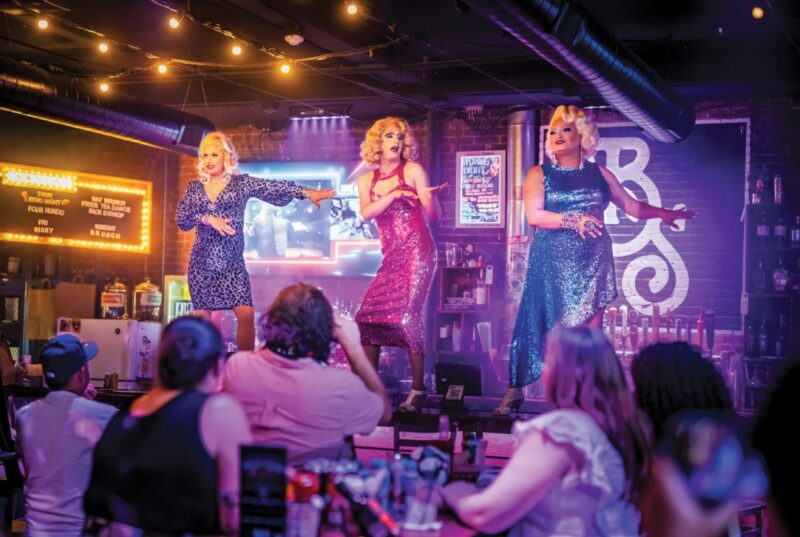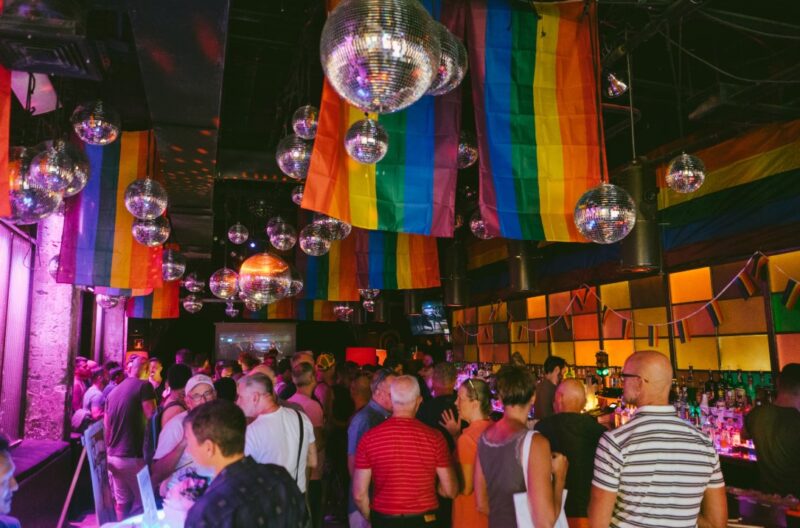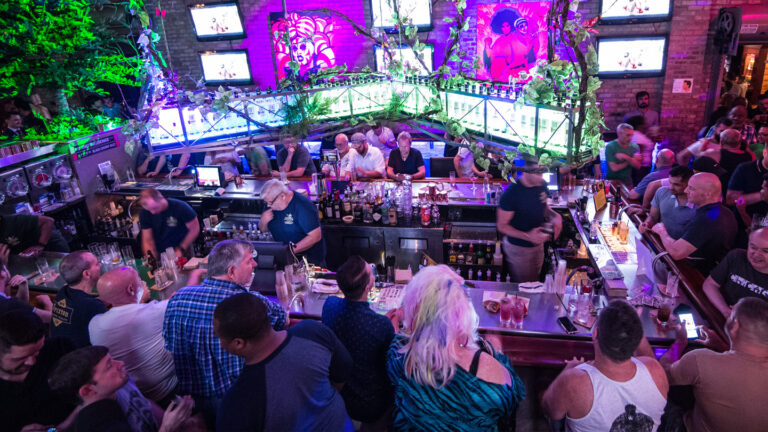Inclusive hospitality spaces create comfort, trust, and ease for LGBTQ+ patrons and staff.
A bar can function as a social gathering point and also as a safe haven where people feel valued, respected, and free to express themselves without judgment.
Foundational Values
Clear mission statements that openly support LGBTQ+ inclusion help set expectations for everyone involved.
Owners and managers model attitudes that shape daily interactions and influence how guests and staff feel in the space.
Non-discrimination policies must remain visible, easy to follow, and consistently enforced across every shift.
Pronoun and preferred-name options in hiring, training, and customer communication strengthen respectful engagement and create a culture grounded in trust.
Additional details can be outlined through bullet points for clarity:
- Mission statements should appear in training documents, onboarding packets, and staff handbooks.
- Managers need to reinforce expectations during staff meetings and performance check-ins.
- Policies should be displayed near staff areas and customer-facing spaces.
- Pronoun fields in internal forms help normalize inclusive language practices.
Visual and Environmental Cues of Safety

Pride flags, stickers, and inclusive signage near entrances send immediate signals of safety and openness.
Welcoming phrases with rainbow imagery offer reassurance to guests who may be visiting for the first time.
Lounge spaces gain warmth and familiarity when LGBTQ+ magazines or books are available, giving visitors material that reflects a broad range of identities, experiences, and stories.
Several points can help present these ideas clearly:
- Entrance signage should be easy to spot without feeling overwhelming.
- Stickers and decals can be placed near menus, mirrors, and service stations.
- Reading materials serve as conversation starters and comfort items for guests waiting on orders.
Inclusive Menu And Offerings
Bars that offer non-alcoholic choices, vegan items, and gluten-free beverages show care for varied preferences and needs.
Signature cocktails inspired by LGBTQ+ figures or history can spark connection and discussion among guests.
Guest participation in mixology nights or drink-naming contests adds fun and encourages repeat visits.
It is possible to design cards that will be used by loyal guests. If you need some help with this segment, you can always use a card generator.
More details can be pointed out:
- Mocktails should be placed on the main menu, not hidden in a small corner.
- Vegan spirits and mixers help guests feel considered.
- Seasonal drinks featuring LGBTQ+ icons keep the menu lively.
- Card programs reward regular visitors and help build long-term relationships.
Staff Training And Language Use

Staff training should cover LGBTQ+ terminology, respectful phrasing, and common pitfalls such as using “sexual preference” instead of “sexual orientation.”
Clear guidance helps staff feel prepared, confident, and ready to support guests in a considerate way.
Ungendered language like “folks,” “guests,” or “partner” keeps interactions smooth and comfortable.
Such terms remove unnecessary assumptions and create space for everyone to feel acknowledged.
Consistent use of neutral expressions helps conversations feel natural for patrons with many different identities.
Pronouns in introductions, emails, and name tags help normalize respectful communication. Guests observing staff using pronouns often feel more at ease sharing their own.
Visible pronoun practices also signal care and attention to personal identity without forcing anyone to explain themselves repeatedly.
Staff should mirror patrons’ chosen names and terms while avoiding assumptions that could make anyone uncomfortable.
Active listening, gentle tone, and open posture help create a warm atmosphere where corrections feel safe and simple. Communication based on respect promotes trust and encourages guests to return.
Reinforcing key practices:
- We can reinforce key practices with clear points that guide staff conduct:
- Training sessions should be repeated for new and current staff to maintain consistency.
- Scripts or language guides can be placed behind the bar or in staff rooms to provide quick reminders.
- Managers can model pronoun use in meetings and digital communication to show commitment.
- Corrections should remain gentle, supportive, and free of embarrassment to maintain comfort for everyone.
Physical Space And Layout Considerations
Warm, open seating areas, cozy alcoves, and fully accessible design features create comfort for guests of all body types, abilities, and identities.
Gender-neutral restrooms provide safety and privacy.
Art, photography, or murals that display a wide range of identities help guests feel included and valued.
Key points should keep the focus in this case:
- Seating should include a mix of high-tops, low tables, and cushioned areas.
- Entryways and paths must leave enough room for mobility devices.
- Gender-neutral restrooms should have clear signage and privacy locks.
- Artwork can highlight local queer creators to support community engagement.
Creating A Welcoming Culture Through Events And Engagement

LGBTQ+ focused programming, such as drag shows, pride nights, queer art evenings, or storytelling sessions, inspires connection and gives guests a sense of belonging.
Events shaped with intention help visitors feel relaxed, seen, and included in the social life of the bar.
Queer performers, DJs, and artists bring energy that resonates with the community and encourage guests to return regularly.
Crowds respond strongly to entertainment that reflects their lives, interests, and creative voices.
Fundraisers or awareness nights supporting LGBTQ+ causes demonstrate active support and show guests that their concerns matter.
A community calendar helps everyone follow inclusive nights with ease and stay excited about upcoming programming.
Event Planning Priorities
Additional details can be highlighted through clearly defined points that guide event planning:
- Events should be advertised in-house and on social media to reach regular patrons and new visitors.
- Booking local queer artists strengthens community ties and builds valuable relationships.
- Awareness nights can partner with local nonprofits to support important causes and amplify local efforts.
- Calendars can appear near the entrance and on drink menus to make event information easy to access.
Strengthening Engagement Through Atmosphere

Joyful, creative, and expressive events set a tone that visitors immediately feel.
Staff enthusiasm, friendly greetings, and smooth coordination help reinforce trust and excitement.
Guests benefit when programming aligns with their interests and when the environment feels consistently supportive.
Encouraging Community Participation
Inviting guests to participate in art nights, open mic sessions, or themed gatherings fosters connection and helps visitors feel invested in the space.
Interactive events spark conversation, grow friendships, and support a warm atmosphere that stays consistent throughout the venue.
Summary
Creating a welcoming LGBTQ+ environment requires continuous effort and attention.
Safety, visibility, and respect serve as guiding values that shape every interaction.
Bars that embrace these principles can grow into warm, supportive community spaces where everyone feels comfortable and acknowledged.

